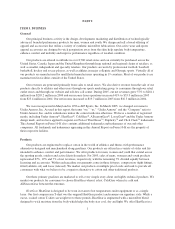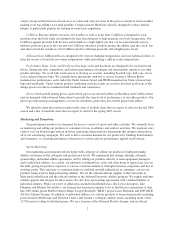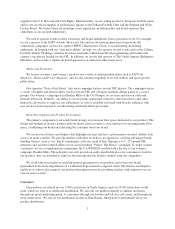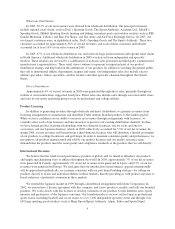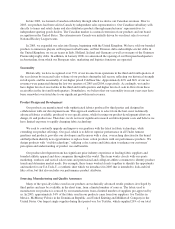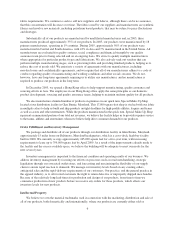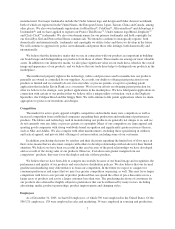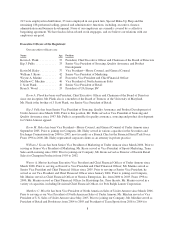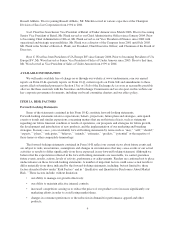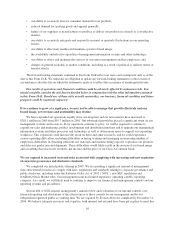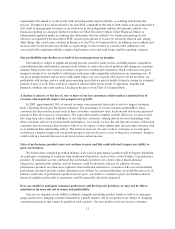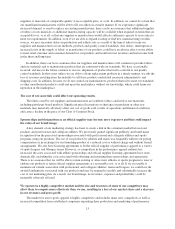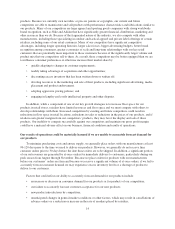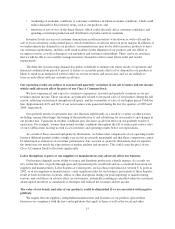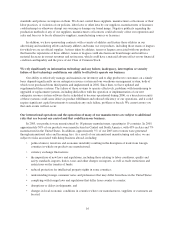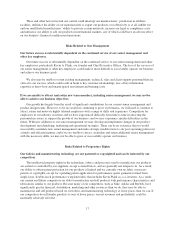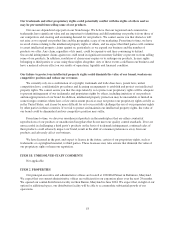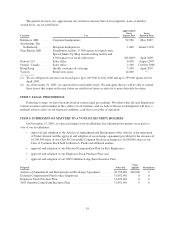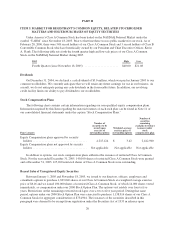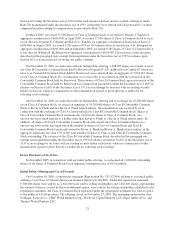Under Armour 2005 Annual Report Download - page 17
Download and view the complete annual report
Please find page 17 of the 2005 Under Armour annual report below. You can navigate through the pages in the report by either clicking on the pages listed below, or by using the keyword search tool below to find specific information within the annual report.requirement. We intend to work closely with our independent registered public accounting firm during this
process. Though we have taken efforts to become SOX compliant by the end of 2006, there is no guarantee that it
will result in management assurance or an attestation by the independent auditors that internal controls over
financial reporting are adequate. In the event that our Chief Executive Officer, Chief Financial Officer or
independent registered public accounting firm determines that our controls over financial reporting are not
effective as required by Section 404 of SOX, investor perceptions of us may be adversely affected and, among
other things, this could cause a decline in the price of our Class A Common Stock. In addition, our overhead may
increase and our net income may decline as a percentage of net revenues as a result of the additional costs
associated with complying with the complex legal regime associated with being a public reporting company.
Our profitability may decline as a result of increasing pressure on margins.
Our industry is subject to significant pricing pressure caused by many factors, including intense competition,
consolidation in the retail industry, pressure from retailers to reduce the costs of products and changes in consumer
demand. These factors may cause us to reduce our prices to retailers and consumers, which could cause our gross
margin to decline if we are unable to offset price reductions with comparable reductions in our operating costs. If
our gross margin declines and we fail to sufficiently reduce our cost of goods sold or grow our net revenues, our
profitability will decline, and we could incur operating losses that we may be unable to fund or sustain for extended
periods of time, if at all. This could have a material adverse effect on our results of operations, liquidity and
financial condition and could result in a decline in the price of our Class A Common Stock.
A decline in sales to, or the loss of, one or more of our key customers could result in a material loss of
revenues and negatively impact our prospects for growth.
In 2005, approximately 36% of our net revenues were generated from sales to our two largest customers,
Dick’s Sporting Goods and The Sports Authority. The percentage of our net revenues attributable to these
customers has increased in recent years as these customers opened new store locations and devoted an increased
portion of their floor space to our products. We expect this trend to continue in 2006. However, we do not enter
into long-term sales contracts with these or our other key customers, relying instead on our relationships with
these customers and on our position in the marketplace. As a result, we face the risk that one or more of these key
customers may not increase their business with us as we expect, or may significantly decrease their business with
us or terminate their relationship with us. The failure to increase our sales to these customers as we anticipate
would have a negative impact on our growth prospects and any decrease or loss of these key customers’ business
could result in a material decrease in our net revenues and net income.
Sales of performance products may not continue to grow and this could adversely impact our ability to
grow our business.
We believe that continued growth in industry-wide sales of performance products will be largely dependent
on consumers continuing to transition from traditional alternatives, such as basic cotton T-shirts, to performance
products. If consumers are not convinced that performance products are a better choice than traditional
alternatives, growth in the industry and our business could be adversely affected. In addition, because
performance products are often more expensive than traditional alternatives, consumers who are convinced that
performance products provide a better alternative may still not be convinced that they are worth the extra cost. If
industry-wide sales of performance products do not grow, our ability to continue to grow our business and our
financial condition and results of operations could be materially adversely impacted.
If we are unable to anticipate consumer preferences and develop new products, we may not be able to
maintain or increase our net revenues and profitability.
Our success depends on our ability to identify, originate and define product trends as well as to anticipate,
gauge and react to changing consumer demands in a timely manner. All of our products are subject to changing
consumer preferences that cannot be predicted with certainty. Our new products may not receive consumer
11


